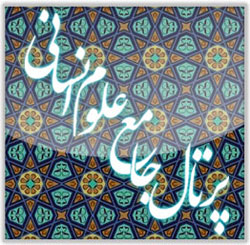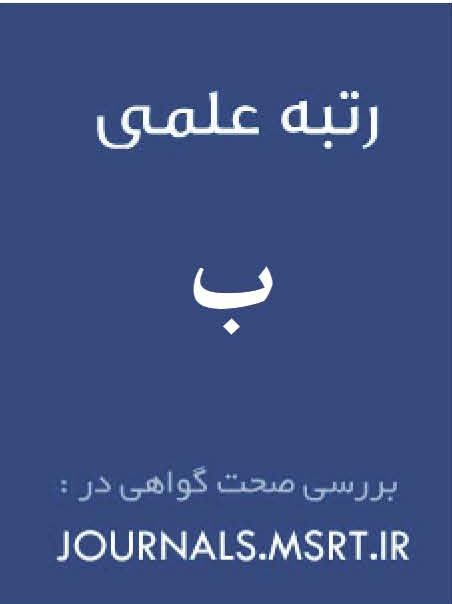مطالعه همنشینیهای زبانی در قرآن و تاثیر آن بر گسترش معنایی واژگان انتزاعی
کلمات کلیدی:
همنشینی زبانی, قرآن کریم, واژگان انتزاعی, گسترش معنایی, تحلیل متنچکیده
همنشینیهای زبانی یکی از ابزارهای مهم در تحلیل معنایی متون مختلف بهویژه متون مقدس همچون قرآن کریم هستند. در قرآن، واژگان انتزاعی بهطور ویژهای در کنار کلمات مشخصی همنشین میشوند که این همنشینیها، نقشی کلیدی در گسترش و تبیین معنایی این واژگان ایفا میکنند. این پژوهش با تمرکز بر تحلیل همنشینیهای زبانی در قرآن کریم، به بررسی چگونگی تأثیر این همنشینیها بر انتقال معانی عمیقتر و وسیعتر واژگان انتزاعی پرداخته است. روش پژوهش بر پایه تحلیل محتوای قرآن و بررسی ساختار کلمات در سیاق آیات مختلف استوار بوده و تلاش شده است تا با توجه به قرائن زبانی و معنایی، نقش همنشینی در تقویت پیوستگی مفاهیم انتزاعی روشن شود. یافتههای این تحقیق نشان میدهد که همنشینیهای زبانی نه تنها باعث تبلور معنای اصلی واژگان میشوند، بلکه از طریق پیوند واژگان انتزاعی با مفاهیم ملموستر یا زمینهسازی معنایی خاص، به توسعه و گسترش معنی این واژگان کمک میکنند. در نتیجه، این نقش همنشینیها در قرآن نه تنها فهم معنای واژگان انتزاعی را آسانتر میسازد، بلکه عمق و دقت معنایی بیشتری به آنها میبخشد.
دانلودها
مراجع
Abd al-Tawwāb, R. (1988). Mabāhith-i dar Fiqh al-Lughah va Zabān Shenāsi-ye 'Arabi (Discussions in Lexicography and Arabic Linguistics) (Translated by H. R. Sheykhi. ed.). Astan Quds Razavi Publications.
Āmeri Bāreki, M. R., Hosumi, V., Tavakkolniā, M., & Aghili, S. A. (2021). Analysis of the Semantic Network of the Particle 'Hatta' in the Quran with a Cognitive Semantics Approach. Linguistic Essays, 12(4 (Serial 64)), 691-720.
Dinesen, A. M. (2020). Darāmadi bar Neshāneh-Shenāsi (An Introduction to Semiotics) (Translated by M. Ghahremān. ed.). Qoqnoos Publishing.
Emdādi, A., Badakhshān, I., & Dehqān, M. (2021). An Investigation of the Polysemy of Vocabulary in the Holy Quran Based on the Cognitive Lexical Semantics Approach. Comparative Linguistics Research, 11(21), 199-223.
Ma'mouri, A. (2007). Linguistic Knowledge and Its Applications in Quranic Studies. Journal of Quran and Science, 1, 161-176.
Moti, M. (2008). Semantics of Beauty in the Holy Quran Imam Sadiq University].
Nilipour, M., Ghāemi Niā, A., & Nosrati, S. (2016). Application of Prototype Theory and Radial Network in the Cognitive Semantics of Piety (Taqwa) in the Quran. Zehn (Mind), 17(66), 93-117.
Pakatchi, A. (2002). Grammatical Semantics Theory and Its Application Context in Quranic Studies. News and Information, 8(45-46), 1-20.
Palmer, F. (2021). Semantics (A New Look at Meaning) (Translated by M. Fayyāz. 8th ed.). Markaz Publishing.
Sa'idi Roshan, M. B. (2019). Tahlil-e Zabān-e Qur'an va Ravash Shenāsi-ye Fahm-e Ān (Analysis of the Language of the Quran and the Methodology of Its Comprehension). Hawzah and University Research Institute, Organization of Islamic Culture and Thought Research Institute.
Safavi, K. (2018). Darāmadi bar Ma'ni Shenāsi (An Introduction to Semantics). Sooreh Mehr Publishing.
دانلود
چاپ شده
ارسال
بازنگری
پذیرش
شماره
نوع مقاله
مجوز
حق نشر 2025 Hamed Vashani (Author); Kamran Mehregan; Goodarz Shakibaei, Bahman Gorjian (Author)

این پروژه تحت مجوز بین المللی Creative Commons Attribution-NonCommercial 4.0 می باشد.







